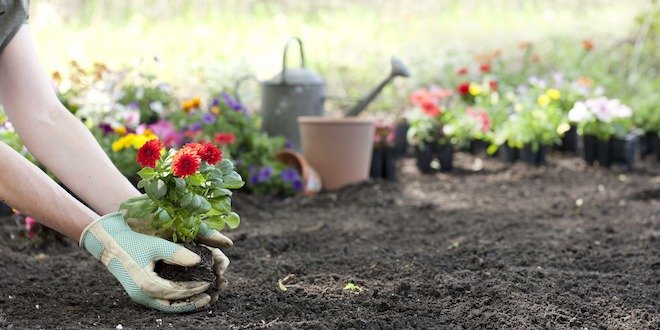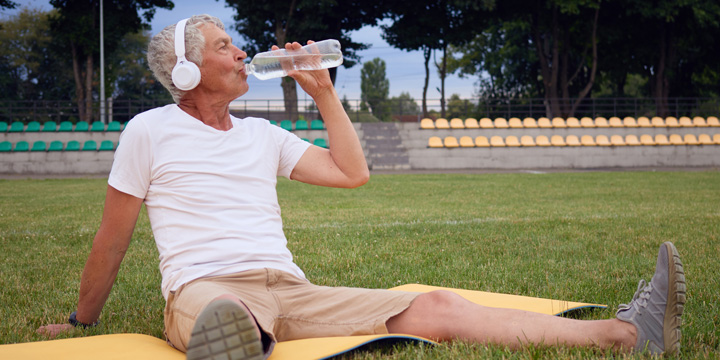
Gardening is a great way of keeping fit and getting your yard in shape at the same time. Gardening for exercise rates right up there with other moderate to strenuous forms of exercise, like walking and bicycling. Without even noticing, you are also working all the major muscle groups: legs, buttocks, arms, shoulders, neck, back and abdomen.
Planting
Planting those gorgeous marigolds this spring doesn’t just improve your garden; it also helps you stay in shape! Planting flowers involves lifting, digging, squatting, and stretching. These movements help to develop your muscles and improve your flexibility. Planting also boosts your mental health. Spending time in the garden has been shown to reduce stress and improve overall feelings of well-being.
Weeding
Your garden will reap the benefits of weeding – no more dandelions! – but there are benefits for you, too. The leaning and pulling action, just like planting, helps improve flexibility and strength.
Raking leaves
Did you know raking leaves offers many of the same benefits as a vigorous walk? The action of raking is good for your heart, and helps build strength in your legs, shoulders and core. You might be surprised by how many calories you can burn, from raking and bagging leaves. Estimates show the range is between 300-450 calories an hour depending on your weight and build.
Mowing the lawn
In the warm spring and summer months your lawn comes to life seemingly overnight. While some might consider mowing the lawn a chore, it is also great exercise – especially if you are using a manual mower.
Digging and turning soil
If you have broken a sweat while digging up soil to prepare for planting, you are not alone. Digging and turning soil is vital for a healthy garden – and it helps you stay healthy, too. These activities work various muscle groups, including your legs, arms, and back.
Watering
Watering plants also has benefits. It brings you outdoors and offers the calming effect of being in a natural setting. The exposure to sunlight and fresh air can boost your immune system and helps your body produce vitamin D, which keeps bones strong.
Pruning and trimming
Pruning and trimming branches on trees and bushes can be quite a workout. It can elevate your heart rate just like going to the gym. Pruning and trimming involves a lot of reaching and bending, encouraging muscle flexibility and building strength.
In terms of physical activity, the best part about gardening is that if you enjoy yard work at all, you aren’t watching the clock or counting down the minutes until you’re done (the way that many people do while they are on a treadmill). You can easily spend a whole afternoon or an entire day working outside, without feeling as though you are putting yourself through a physically grueling workout.
Treat your gardening like any other exercise
Like other physical activities, there are steps you can take to avoid muscle strain and injury. Remember to stretch before, during and after you garden. Also be sure to pace yourself; take breaks when you are feeling tired and spread tasks over a period of time so you can recover between projects.
It is also important to find garden tools that work for you, instead of ones that are too heavy or cause strain. For example, use a wheelbarrow to carry supplies, an extended handle to reduce reach, and tools with good grips or ergonomic handles.
To learn more about ways to prevent injury, visit the Canadian Physiotherapy Association’s website or speak with a physiotherapist.
There are many ways to reap the benefits of gardening. It can boost your heart health, build muscle tone and improve your outlook. Best of all: you don’t have to wait in line for a treadmill!
“Gardening is medicine that does not need a prescription.” – Author unknown



